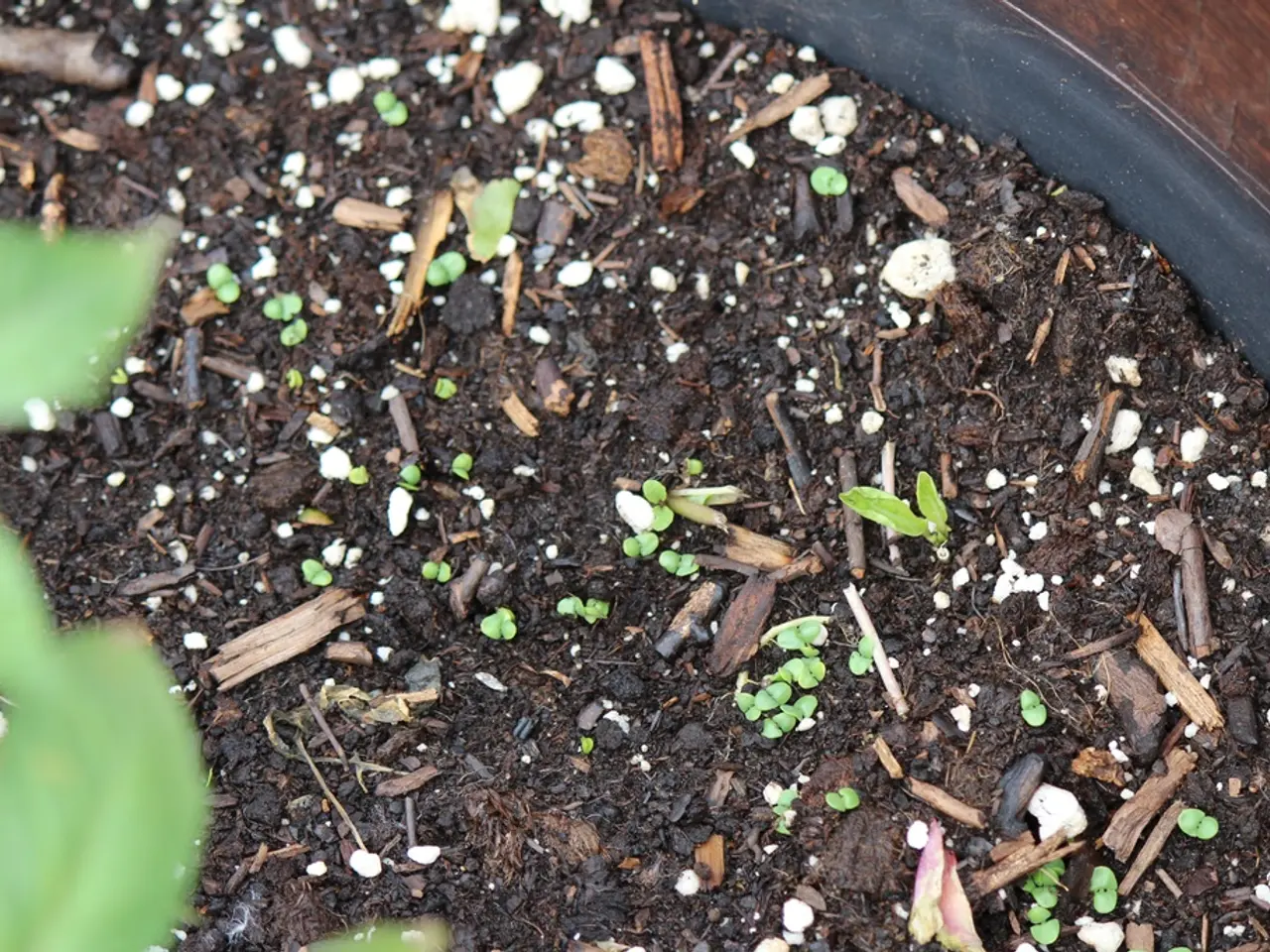Is it necessary or not to modify clay soil before planting?
Clay soil, known as "heavy soil," has its benefits. It provides a stable foundation for plants, lasts for many years, and has a higher capacity to hold water and nutrients, requiring less irrigation and fertiliser. However, it can be challenging to work with due to its dense texture and resistance to water movement. Here's a guide on how to improve clay soil effectively.
Improving Clay Soil
Organic matter plays a crucial role in improving clay soil. Adding a substantial layer (about 2-4 inches) of well-decomposed organic material such as compost, manure, leaf mold, or mulch regularly can significantly enhance soil structure. This organic matter creates space within the dense clay particles, improving aeration, water infiltration, and root penetration while increasing nutrient availability.
Key points to ensure success and avoid common mistakes include:
- Use high-quality compost: Compost should be dark, crumbly, and free of contaminants to effectively loosen clay soil and provide nutrients.
- Incorporate organic matter into soil: Mixing materials into the top several inches of soil helps integrate the organic matter thoroughly and accelerates improvement.
- Regular replenishment: Organic matter decomposes over time, so continue adding it annually to maintain and build soil health.
- Avoid adding sand alone: Adding sand to clay soil can worsen compaction unless done in very large proportions, which is generally impractical.
- Prevent soil compaction: Minimize walking on or working wet clay soil to avoid further compaction, which impedes root growth and water movement.
- Consider cover crops and mulching: Growing and chopping cover crops adds organic matter in place (chop and drop), while mulch conserves moisture and suppresses weeds, further improving soil conditions.
- Test soil before amendments: Soil testing to assess pH, nutrient levels, and texture will guide appropriate amendment choices and avoid unnecessary or ineffective treatments.
Clay-Tolerant Species
Many perennials and annuals thrive in clay soils as they can establish a firm grip with their roots. Examples of clay-tolerant species include Amsonia Blue Star, Asclepias tuberosa Butterfly Weed, Aster, Coreopsis Tickseed, and Echinacea purpurea Coneflower. Certain plants, such as birch trees and hawthorns, also prefer clay soil.
Identifying Clay Soil
Observing the yard during wet and dry periods can help identify clay soil: if it remains wet or flooded for hours after heavy rains, or cracks during prolonged dry weather, it may have a high clay content. The "squeeze test" can also indicate clay soil: if a handful of damp soil stays clumped together and does not fall apart when prodded, it is likely clay soil. The "roll test" can also show clay soil: if a handful of moist soil can be rolled into a ball and holds its shape, it is likely clay soil. The "settle test" and the "water pour test" can also indicate slow drainage in clay soil.
Weeds in Clay Soil
Weeds that thrive in clay soil include curly dock, horsetail, lamb's quarters, plantain, and nutsedges. Before making any amendments, it's recommended to test the soil to understand its organic matter, pH, and nutrient levels.
In conclusion, improving clay soil is a gradual process of regularly adding and incorporating organic matter, carefully managing soil use to avoid compaction, and enhancing soil biology through natural methods such as cover cropping and mulching. Avoid shortcuts like adding only sand or working the soil when wet, which can damage soil structure rather than improve it. With patience and the right approach, you can transform your clay soil into a thriving garden.
Good sources of organic matter include compost, leaf mould, well-rotted manure, untreated grass clippings, shredded leaves, pine bark, and gypsum. Adding sand or peat moss to clay soil can make compaction and drainage problems worse.
- Adding organic matter like compost, manure, leaf mold, or mulch to clay soil can improve its structure, enhancing aeration, water infiltration, and root penetration for better plant growth.
- A lasting solution to improve clay soil is regular replenishment of organic matter, which should be done annually to maintain and build soil health effectively.
- To ensure success, use high-quality compost that is dark, crumbly, and free of contaminants, mix the organic matter into the top several inches of soil, and avoid adding sand alone as it could worsen compaction.
- Understanding the pH, nutrient levels, and texture of the soil through testing is essential, as it will guide the right amendment choices to improve the soil for a flourishing garden.




